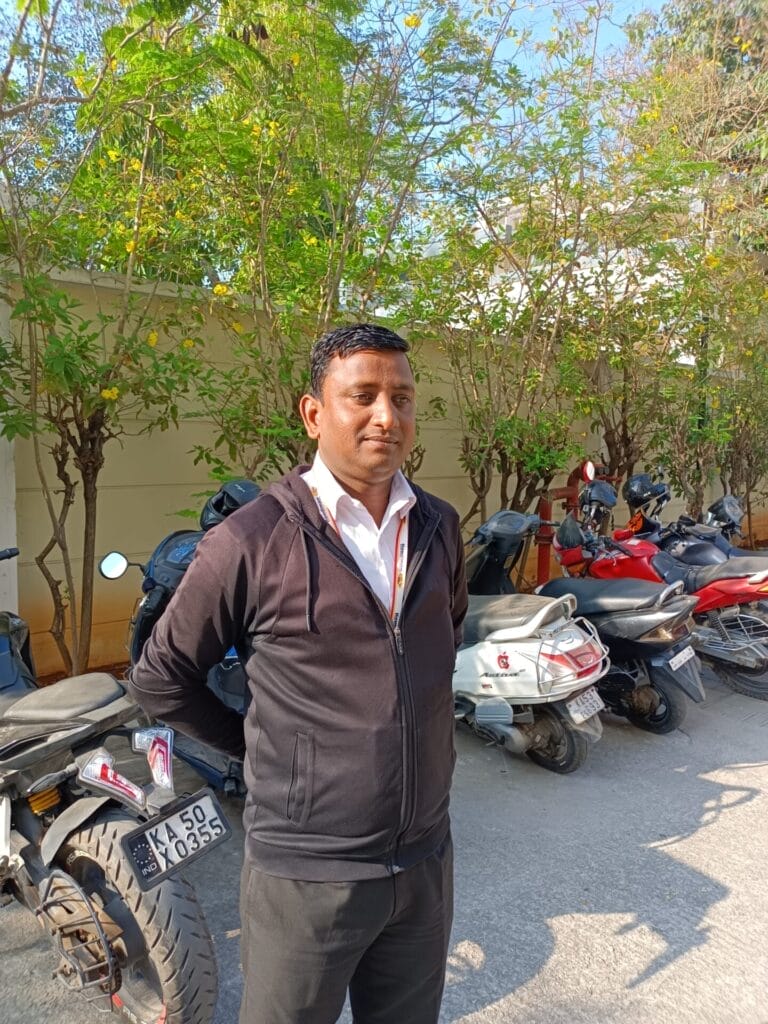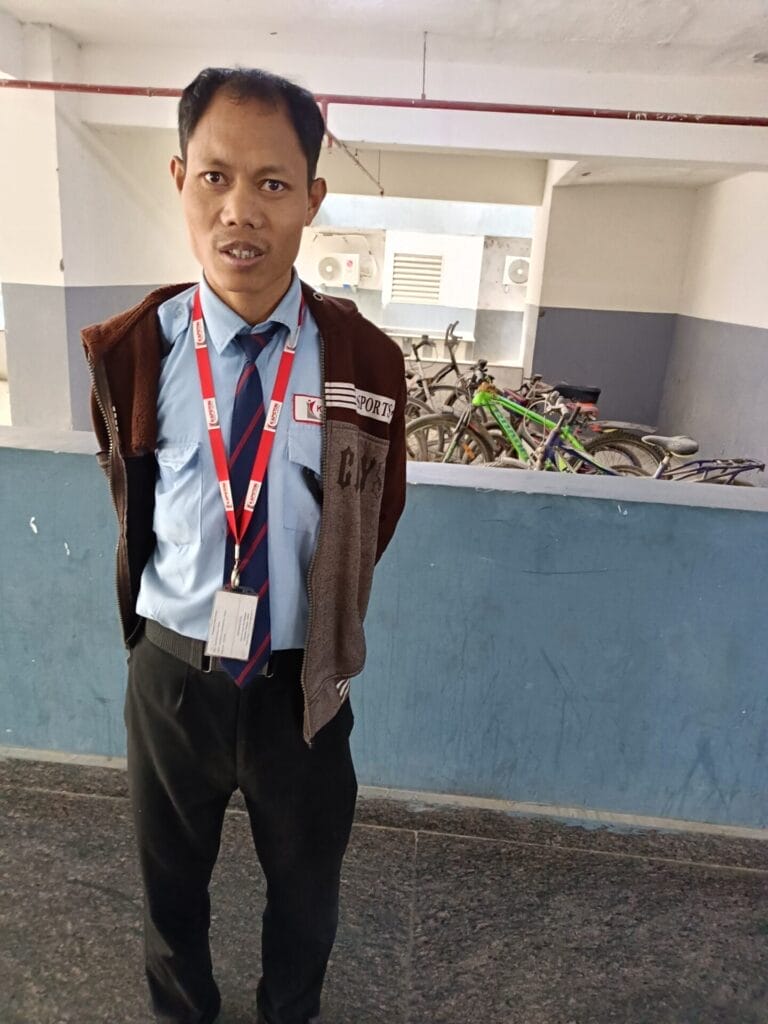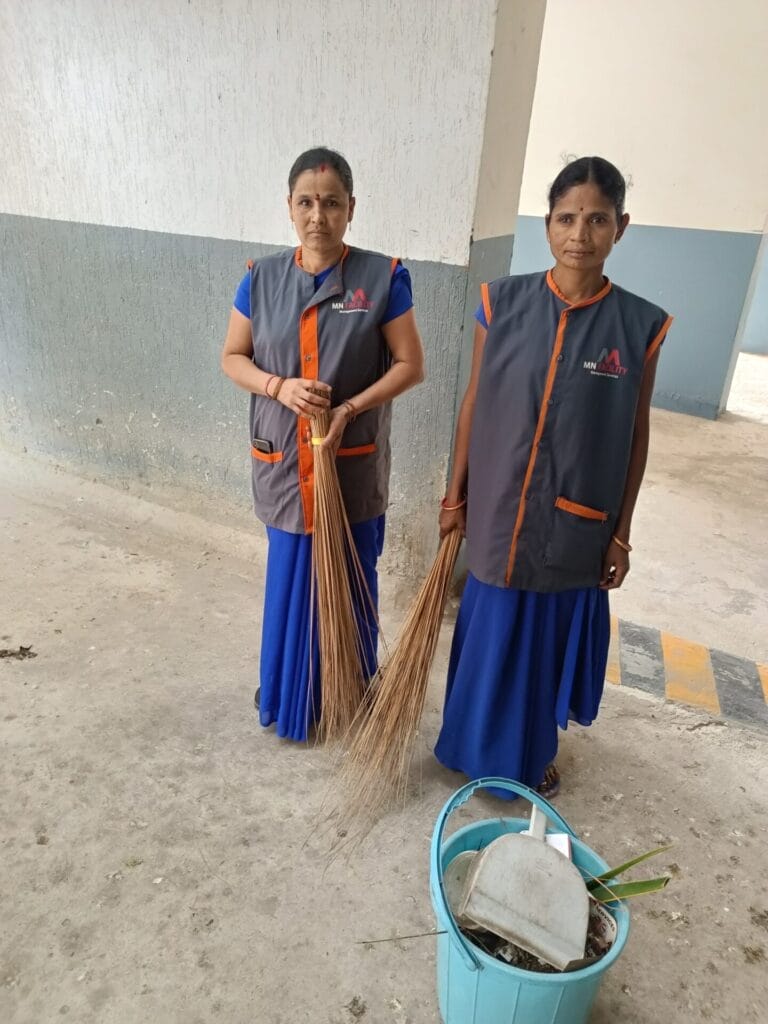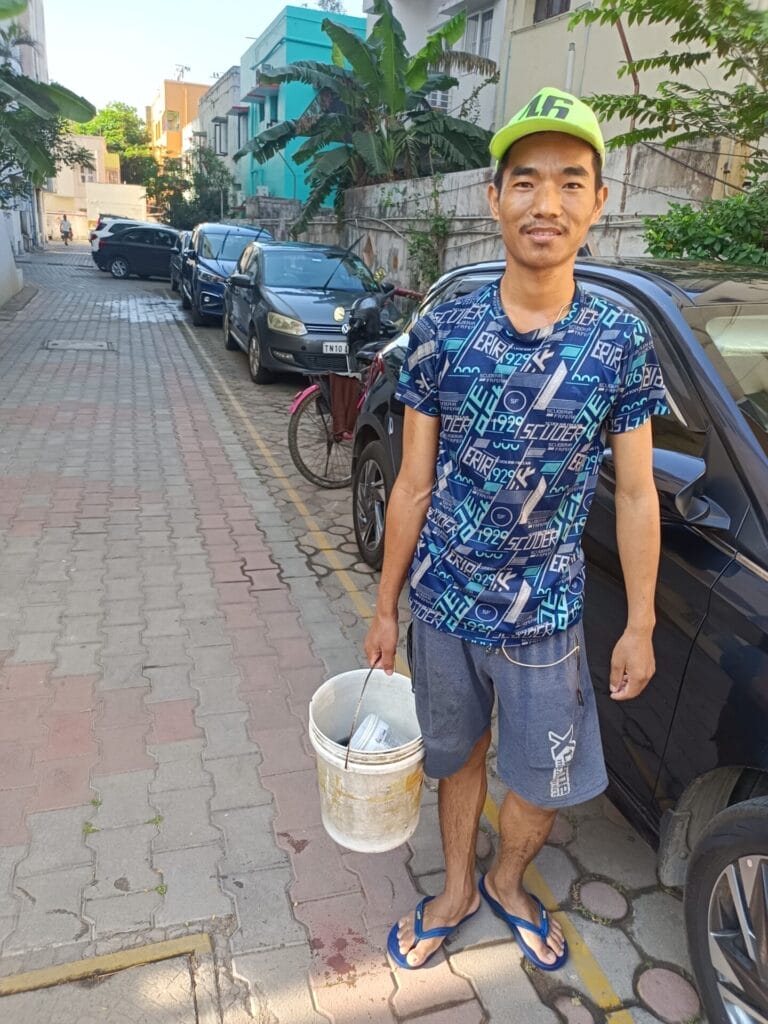Urban India at its lower end of the economic spectrum is changing fast. As cities develop and become important centres of trade and services, the migrant workers form a crucial part of this growth. In most cities today, a bulk of the critical support jobs are done by migrant workers, often hailing from states such as Orissa, Bihar, Assam and West Bengal.
Through my interactions with guest workers from various parts of India, I have observed an evolving workforce with aspirations for better job opportunities, higher education for their children, and a desire to enhance their skills. Here are some glimpses of this emerging migrant population based on my conversations with them.
Read more: It’s a struggle: Away from family, migrant workers from Murshidabad face unending challenges
From a land far away

Consider the scenario of security services in gated communities and multi-storied residential complexes in Bengaluru. In his mid-30s, Adil is a security supervisor in one such complex in the city. He migrated a few years ago from Silchar, Assam. Having completed his 10th standard, he started working as a security guard and progressed to become a supervisor.
With a working knowledge of Hindi, English, and Kannada, he can interact with co-workers, residents, guests, and service providers. Adil works a twelve-hour shift and earns Rs 20,000 per month. He remits Rs 5,000 to his family in Silchar and spends Rs 5,000 on rent for the room he shares with his colleagues. Living in the nearby Pai Layout, Adil rides a bike to his workplace at CV Raman Nagar.
He has a demanding work schedule starting with a stand-up meeting with the guards, when he allocates duties, reviews the happenings of the day before, analyses what went wrong the previous day and gives guidelines on how to handle any tricky situations in future.
While a few of the security personnel at the complex are from places like Gulbarga, in interior Karnataka, most of them are from outside the State. Adil is in his mid-30s and when asked about his future plans, he is clear that at a later date, he will withdraw his provident fund (PF), take a loan and go back to Silchar to set up a small shop in his village.
Living and working in hi-tech city

His counterpart in Hyderabad has a different story to tell. Kumar has moved from 24 Parganas in West Bengal to the city and works as a security guard in a residential complex there. He earns Rs 17,000 a month for a twelve-hour duty and shares accommodation with other single men. He eventually wants to bring his family to Hyderabad.
Unlike him, Shantamma and Rukku are from Adilabad and are working as housekeeping staff in another such complex in the hi-tech city. They work an eight-hour schedule from 9 am to 5.30 pm with a half-hour lunch break. Both of them get a monthly salary of Rs 13,000.
Shantamma’s husband is a security guard at a nearby international school, and he earns about Rs 17,000 a month. They visit their ancestral home twice annually, but find it unaffordable. Rukku’s mother and two children make up the rest of the family.
Rukku says that she wants her elder daughter to join school in Hyderabad, but she has not been able to get a school leaving certificate from the village school her daughter last attended. The school administration is asking for Rs 1.5 lakh for issuing the certificate. Rukku dreams for her daughter all that she couldn’t get and wants her to study further in a government or aided school. She is not keen on her elder daughter doing menial work.

A few thousand helping hands like Shantamma and Rukku make a living in Hyderabad, with most of them having migrated from other states or the hinterland of Telangana and Andhra Pradesh. Apart from residential spaces, schools in these cities and their suburbs also employ a few thousand security guards, bus drivers and gardeners, who earn sub-Rs 15,000 a month.
Opportunities for skilled and semi-skilled workers
In addition to all these jobs, the migrant, domestic workforce in Chennai, Bengaluru and Hyderabad also consists of cooks and there is a great demand for those who are adept at a variety of cuisines. Madhuri is one such cook, whose day starts at 6 am and ends well past 7 pm with a 5-hour break from noon to early evening. On average, she cooks breakfast, lunch, and dinner for four to five families and takes a day off on Sundays. For all three meals, she charges Rs. 7,000 to Rs. 8,000 depending on the number of members in the family and for any two meals she charges anywhere between Rs. 4,000 to Rs. 5,000. Madhuri is good with kitchen gadgets and takes home about Rs 25,000 every month.
Read more: Chennai’s labour stands – a marketplace of exploitation
Another cook Loknath, specialises in preparing vegetarian food, and he makes a decent living cooking for six households a day. He spends a maximum of 45 minutes at each household and devotes the late hours of the morning to cooking for an elderly couple.
Just as families migrate to different parts of the country for work and sometimes, for a change of scene or a better way of life, there has been a continuous influx of cooks from smaller towns to big cities. Some of them save through the year to take a flight home. Others spend two nights and three days on the train to visit their hometown once in 2-3 years.
In big cities, online platforms that provide different home services offer immense opportunities to skilled workers such as carpenters, hairdressers, plumbers, electricians, and home cleaners, who earn anywhere between Rs. 25,000 to Rs. 30,000 a month.
Infrastructure boom drives jobs
Google Maps has made it easy for many to take to driving autos and taxis in unfamiliar cities. I interacted with Suleman, who drives from the early hours to midnight and after meeting his expenses, fuel, and EMI, earns about Rs. 30,000. He lives with his brother, who works for a small restaurant as an attendee. Taxi, auto and bike drivers, delivery personnel, and courier guys easily add up to a few thousand in each city.
Another migrant worker I spoke to was Tinku, a construction worker from Bihar. He lives in quarters provided by the builder/contractor. Reputed builders provide decent rooms with shared bath and toilet facilities for workers and a mess that provides standard meals. Transport is also arranged. With all the facilities, they are more like captive labour and they earn up to Rs. 35,000 a month depending on their skills.
Infrastructure boom, high-rise buildings, road work and flyovers absorb thousands of these workers in each city.
Life in long shifts
The scenario for mall employees is no different. In the bustling streets of East Mambalam, large shopping centres and malls employ young boys and girls in their early twenties from distant small towns. They are provided with uniforms and required to stand for long shifts of 12 hours at counters or entrances to greet shoppers.
Eight or ten of them share small rooms for overnight stays. A portion of their modest earnings, ranging from Rs. 8,000 to Rs. 12,000, is directly sent by the employer to the parents of these youngsters. By the end of the day, these young workers are exhausted, with little energy left except to quickly eat dinner and retire to their shacks for six to seven hours of sleep.
The evolving diaspora in a metro

In Chennai’s Vadapalani, I met Raju, 29, a Nepali from a hilly village near Pyuthan. He cleans 15-17 cars every day for close to five hours and charges anywhere between Rs.1,000 to Rs.1,200 based on the size of the car. After a late breakfast, he works as a security guard for a twelve-hour shift in a small apartment complex that has given him a free one-room residence. His wife is a house helper working in three homes. He has two daughters studying in 4th and 1st standard in a government school. His father works in Delhi and his mother stays at Pyuthan.
Every two years, he takes his entire family to Pyuthan, starting from Chennai by train to Gonda and then enduring a 22-hour road journey to reach the border area near Lumbini. From there, it’s a three-hour walk through hilly terrain to his village in Pyuthan. He has built a four-room house in his hometown for six lakhs. He has no plans to permanently move back because his daughters are fluent in Tamil and may face difficulties continuing their education in Nepal. Instead, he aims to rent a larger house in Chennai for his family of four. His younger brother works in a restaurant in Chennai. This reflects the evolving diaspora in traditional Madras, the Singara Chennai of today.
Need for better skills and employment
This is the story of many migrant workers, who are building the new India across states. They lack well-meaning labour laws and enjoy little to no social security. Engaged in youth-oriented jobs with no clear future beyond their 50s, they face uncertainty. While India stands on the brink of rapid growth, there is also the risk of social upheaval if these issues are not adequately addressed.
There is an urgent need to upskill the youth of India, particularly those from smaller towns and rural districts, with an emphasis on self-employment, thereby discouraging their migration to metros for low-end jobs. Conscious efforts by the State and Central Governments and, NGOs can help in generating employment and developing newer vocations for our youth and for developing a vibrant India.
(The author had one-on-one discussions with those interviewed, their names have been changed and their photographs have been captured with their permission)
Excellent narration of live situations. The writer is very successful in communicating his views which could create lot of thinking in the minds of readers. I enjoyed going through.
Congratulations Mr.Iyer🙏
Jayasimha R
Bengaluru 560070